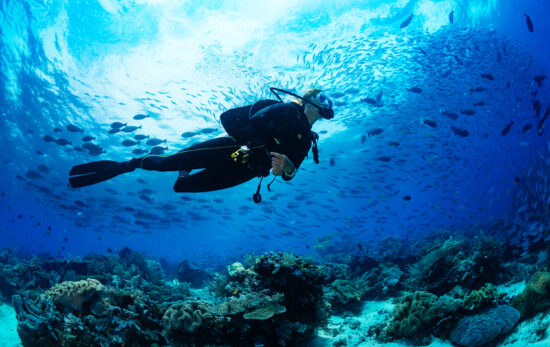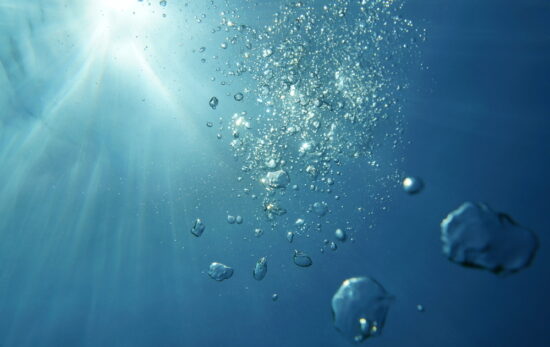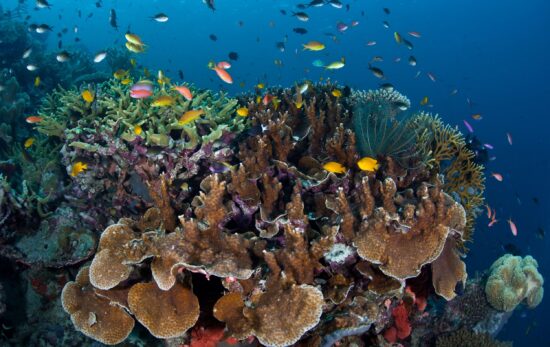Imagine yourself at a nice restaurant. Everyone is well-dressed, there are linen napkins on the tables, mood lighting, decorative flowers, the whole bit. Now imagine one of the diners haphazardly crossing the room – stepping on someone’s foot, knocking over a vase of flowers….you get the idea. Later, the same guy tries to take a photo of a woman in a pretty dress. He gets too close to her with his camera and she gets creeped out and leaves.
No one wants to be “that guy,” or even that guy’s buddy. So it goes with diving.
As divers, we are guests of the underwater world, where good buoyancy is synonymous with good manners. It’s essential to be on your best behavior to protect the environment and keep from embarrassing yourself and your buddies.
There are two keys to buoyancy: balance and breathing
There are two major factors in achieving neutral buoyancy.
- First: wear the right amount of weight for the dive. This will differ depending on your exposure protection and conditions.
- Second: breathe slowly and evenly.
Get those two things sorted and you are the master of neutral buoyancy, right? Well, not exactly.
When I started diving, I always seemed to need a lot of weight to get down. But, at depth I felt over-weighted. I was constantly adjusting the air in my BC and couldn’t maintain that effortless hover others seemed to manage so easily. Now, as an experienced diver, I see other new divers with the same problems. So what’s the secret?
Let’s go back to that errant diner for a moment. Turns out he just wanted to impress his date. What looked like rude behavior was the result of being nervous and uncomfortable. He borrowed a nice pair of shoes from his roommate (with bigger feet) and decided not to wear his glasses. Nervous, stumbling and half-blind he was destined to make a monumental fail.
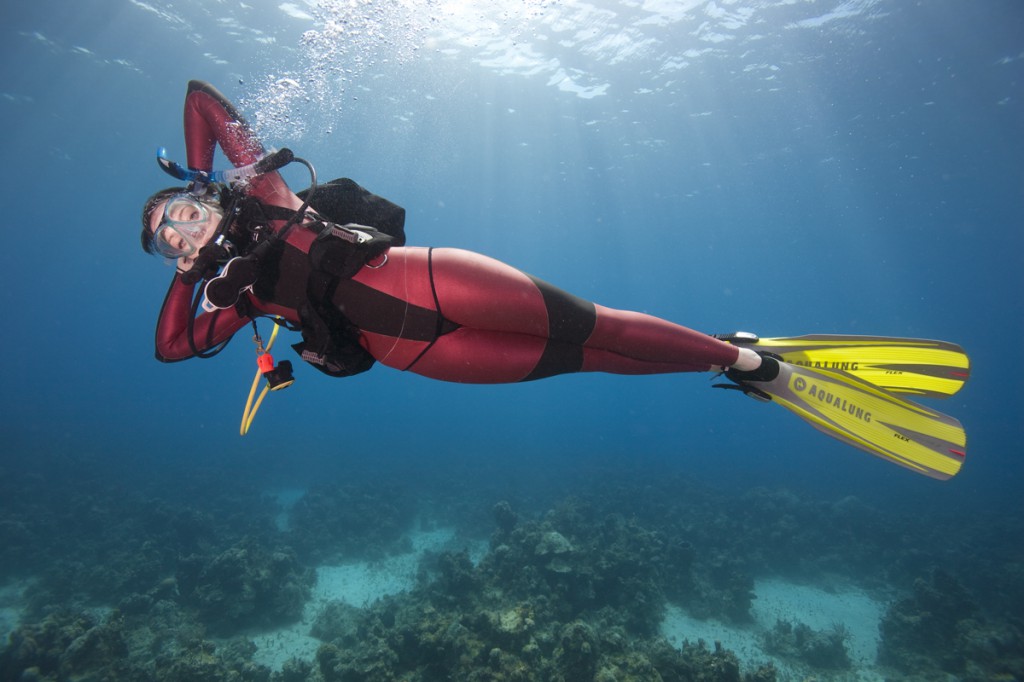
The third key: get comfortable and relax!
Underwater, if you’re nervous and/or wearing unfamiliar gear, you’re not setting yourself up for success. Long, relaxed breaths allow you to maintain control over your buoyancy. Diving can be exciting, but don’t let adrenaline take over.
I also realized: as a new diver I would unconsciously hold my breath because I was nervous. This teeny bit of breath-holding made it hard for me to descend, so I’d wear more weight to compensate. But wearing too much weight screwed up my buoyancy. It was a vicious cycle!
After 40+ dives, I finally got comfortable and was able to dive with less weight. As an added bonus: my dives lasted significantly longer.
Also, around the 40 dive mark, I finally had my own gear. I knew to exactly how much weight to use and where to distribute it, no more guessing. As a result, I finally nailed that genie hover I dreamed of for so long – and became the really good diver with skills others envied.
Here’s the fourth thing I wish someone told me:
It took me ages to work out my buoyancy, but there was no need to struggle for so long. When I became a PADI Divemaster, I assisted with a Peak Performance Buoyancy specialty course and saw new divers gain the skills it took me months to achieve – in one weekend. Many divers made massive gains in just one afternoon pool session.
In the open water class, you learn about and practice buoyancy. But in the specialty class, you take the time to dial everything in: weight, balance, breathing, all of it.
A PADI Pro will help you figure out the exact weight you need and where it should go on your body. Few divers wear all their weight around their waist. You’ve probably seen tank weights, ankle weights, and other configurations. The “right” distribution for you depends on body composition and desired body position (vertical for wall diving vs horizontal for a silty lake bottom).
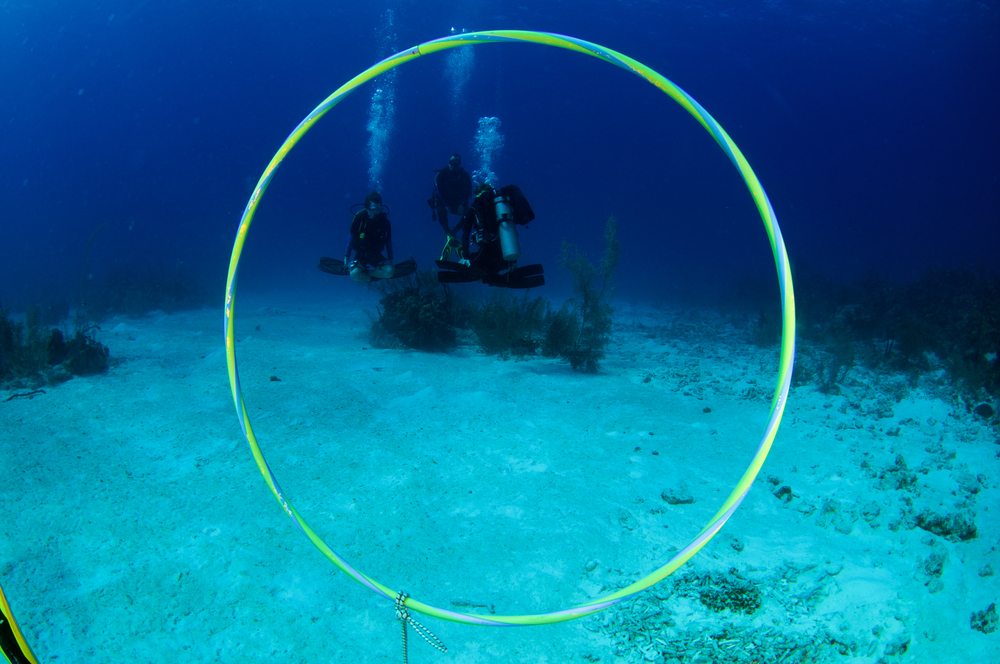
You’ll also practice achieving neutral buoyancy – finding and maintaining that sweet spot. Then you’ll move on to maneuvering. This could be swimming through a hula hoop, tossing a toypedo around without touching the bottom, or other fun games.
Buoyancy is an essential diving skill and life-long practice. No matter what your area of interest (shooting video, doing research, public safety diving, wreck diving) perfect buoyancy is the key to success. Even if you don’t want to do anything but look at fish, the process of achieving good buoyancy should allow you to drop weight and extend your dive time.
Contact your local PADI Dive Shop for more information about the Peak Performance Buoyancy specialty course. The first dive of the may count as an Adventure Dive toward your Advanced Open Water Diver certification – ask your instructor for details.



